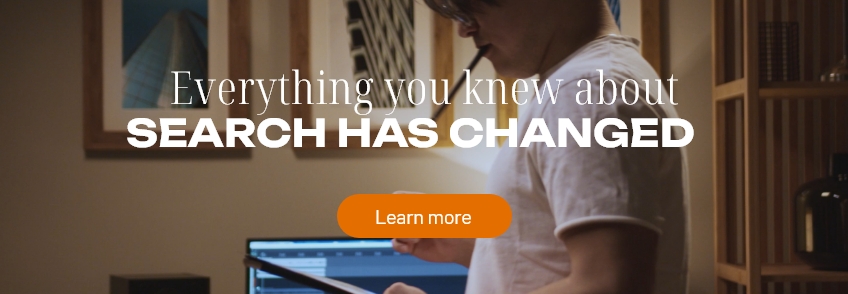Google Marketing Live 2025 delivered a wave of updates set to shape the future of digital advertising, with unsurprisingly, AI front and centre. As always, we’re keeping a close eye on the developments that will have the biggest impact on performance, efficiency and creative delivery.
Here’s a rundown of the standout features UK businesses should be aware of, along with our take on what they mean for your campaigns.

Let’s get into it:
Ads in AI overviews & AI mode
AI Overviews are getting commercial. Google confirmed it will begin showing ads in AI Overviews, meaning we’re likely to see paid results appearing more frequently for high-intent queries. AI Mode is a new, AI-powered way to search which has already launched in the US with wider rollout expected soon. This will also support ads, giving brands more opportunities to show up during AI-assisted journeys.
Why it matters: Your visibility in AI-powered search will increasingly depend on how well your content, assets, targeting and intent signals are optimised.
AI Max for search
Now in beta, AI Max is not a new campaign type – it’s a toggle within existing Search campaigns. It uses your keywords, creative assets and site content to generate smarter coverage and auto-generate new ads, similar to Performance Max.
Why it matters: This feature unlocks greater automation while still drawing on your existing search set-up. It’s a promising step forward for scaling reach without sacrificing quality.
Smart Bidding Exploration
Smart Bidding Exploration is gradually rolling out across accounts and is designed to cast a wider net for high-value searches. It flexes your ROAS targets and uses advanced algorithms to identify new conversion opportunities.
Why it matters: With performance already looking positive where it’s live, this could be key for brands looking to push beyond their current search ceiling.

More granular reporting
Finally Google is improving transparency across PMax with enhanced creative and channel-level reporting, as well as including PMax queries in Search Terms reports.
Why it matters: Better insight = better optimisation. These changes will give marketers far more control and clarity over how PMax is performing.
New customer targeting in PMax
A new feature in PMax will allow advertisers to target only new customers, while excluding existing ones, brand searchers or past engagers on YouTube and Google.
Why it matters: A great way to protect your prospecting budget and reduce wastage, something many brands have been calling for since PMax launched.
Google asset studio
Google unveiled its new Asset Studio: a central hub for creating campaign visuals. It supports AI-powered image and video generation and allows you to pull in content directly from your website or social channels.
Why it matters: The demo looked slick, and for time-strapped creative teams, this tool could be a huge time-saver without compromising on quality.

Lower thresholds for incrementality testing
Google is reducing the spend requirements for testing incrementality, meaning more advertisers will be able to measure the true impact of their campaigns, beyond last-click metrics.
Why it matters: It opens the door for smarter budgeting and attribution for brands with tighter testing budgets.
Agentic AI experiences
Google previewed its vision for “agentic AI” – smarter, conversational interactions within Google Ads and GA4, and longer term, agents that can complete complex tasks (like monitoring prices and making purchases).
Why it matters: This is a longer-term trend, but expect a shift towards more autonomous, assistive tools across the Google ecosystem.
We’re excited about what these updates could mean for performance, efficiency and creative agility – particularly for brands looking to scale without adding complexity. We’ll be testing and applying relevant features as they become available, and we’ll keep sharing our insights as they roll out more widely.
Want to chat through how these updates could impact your campaigns? We’re always happy to chat in more detail – just drop us a line.


